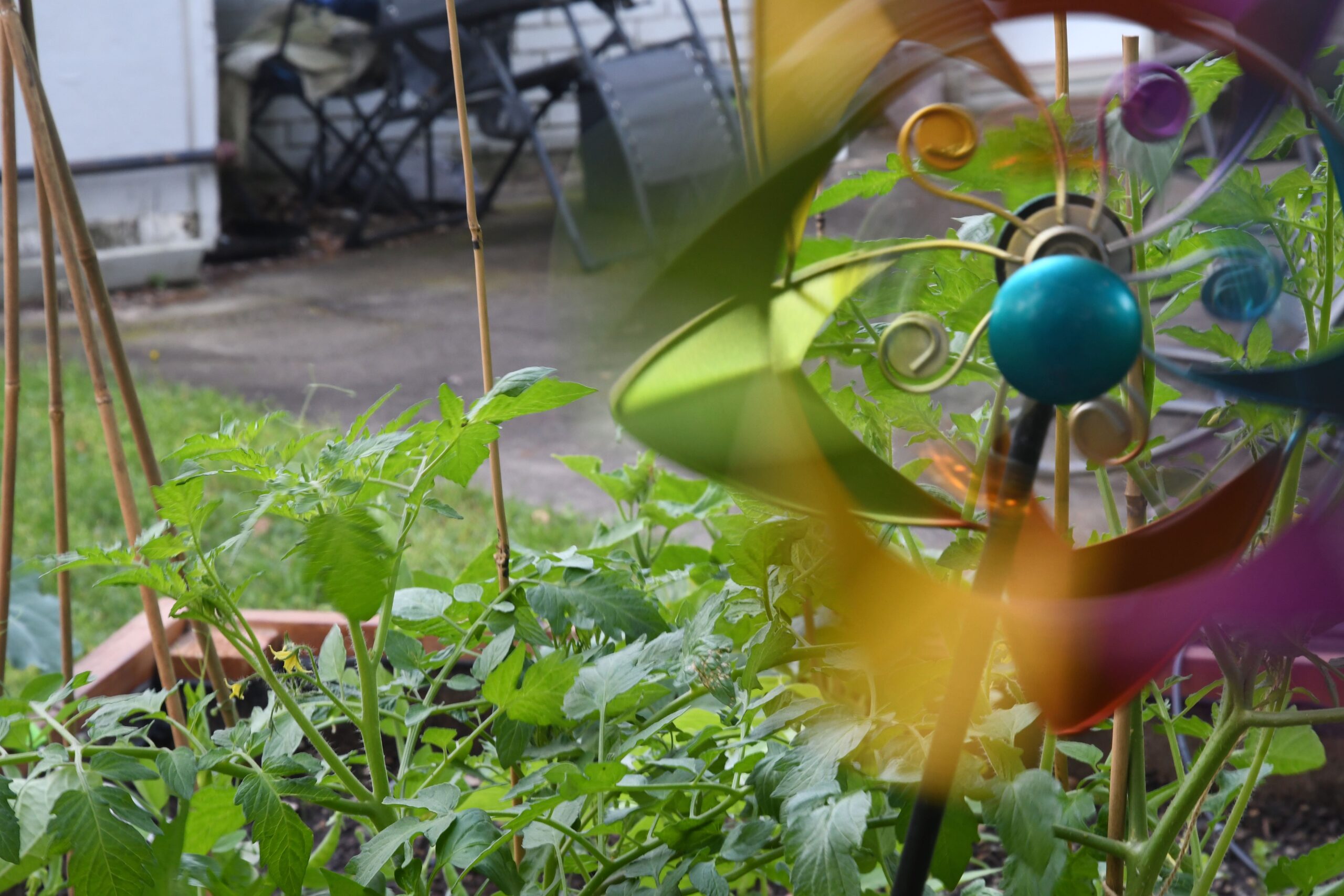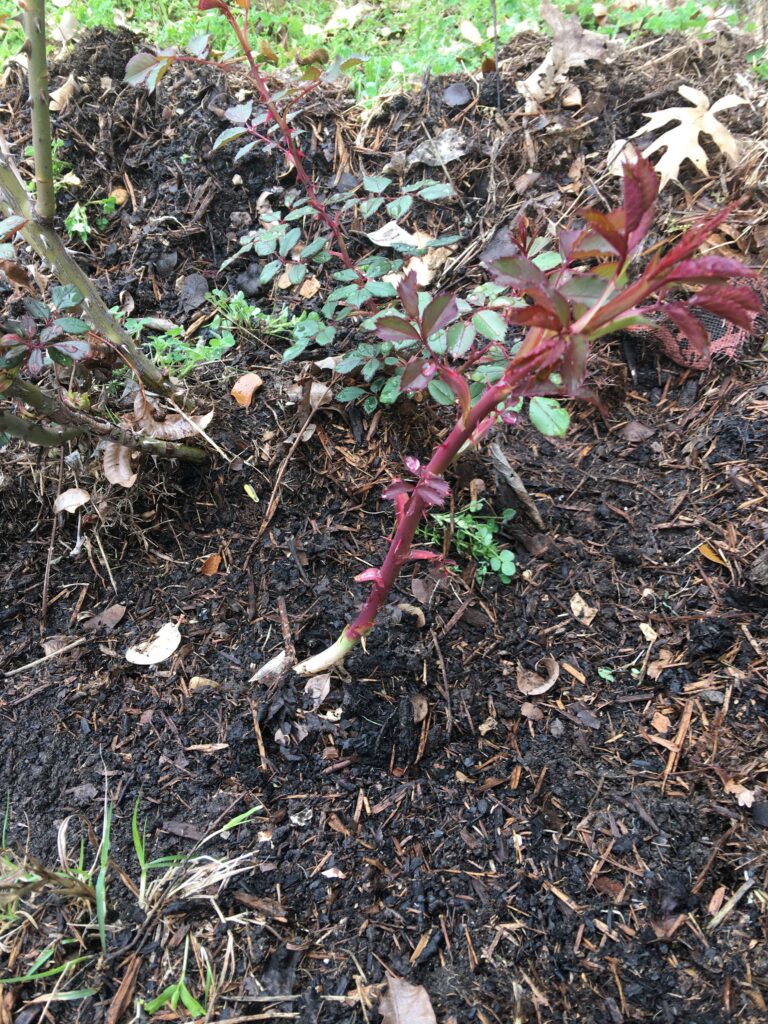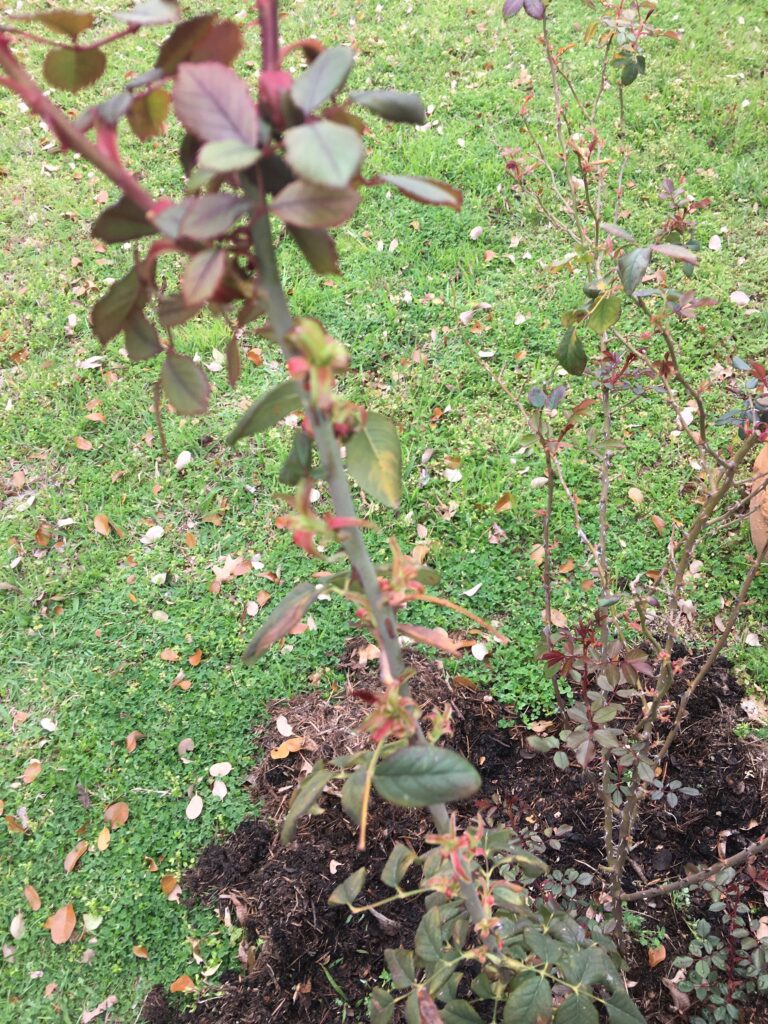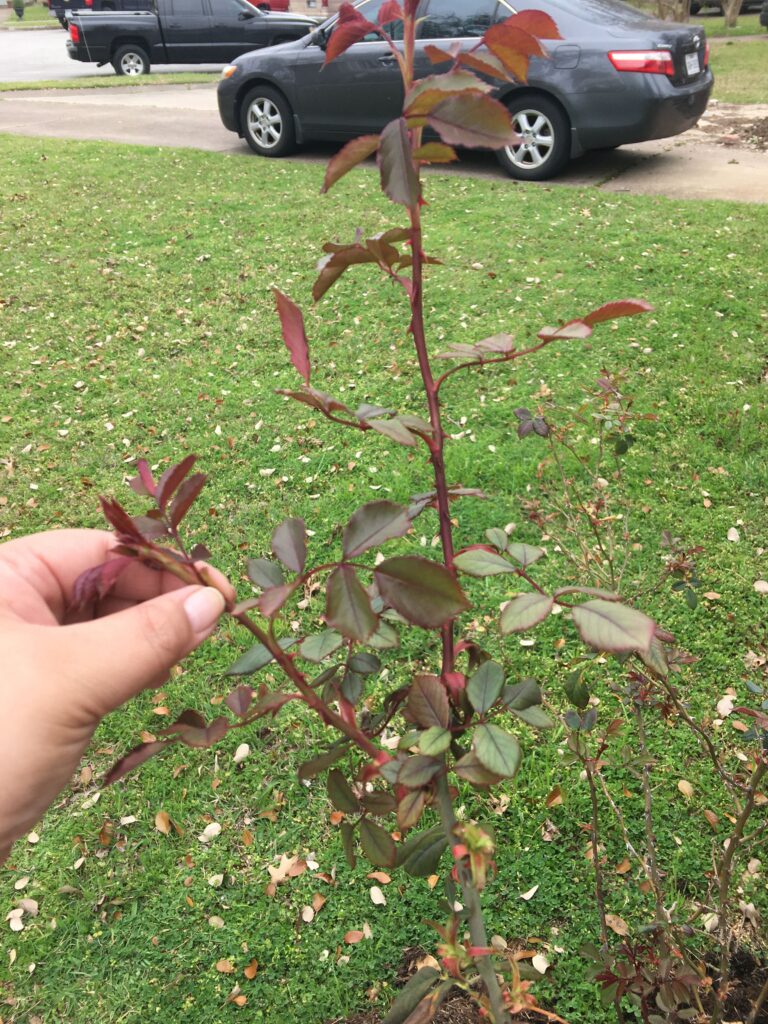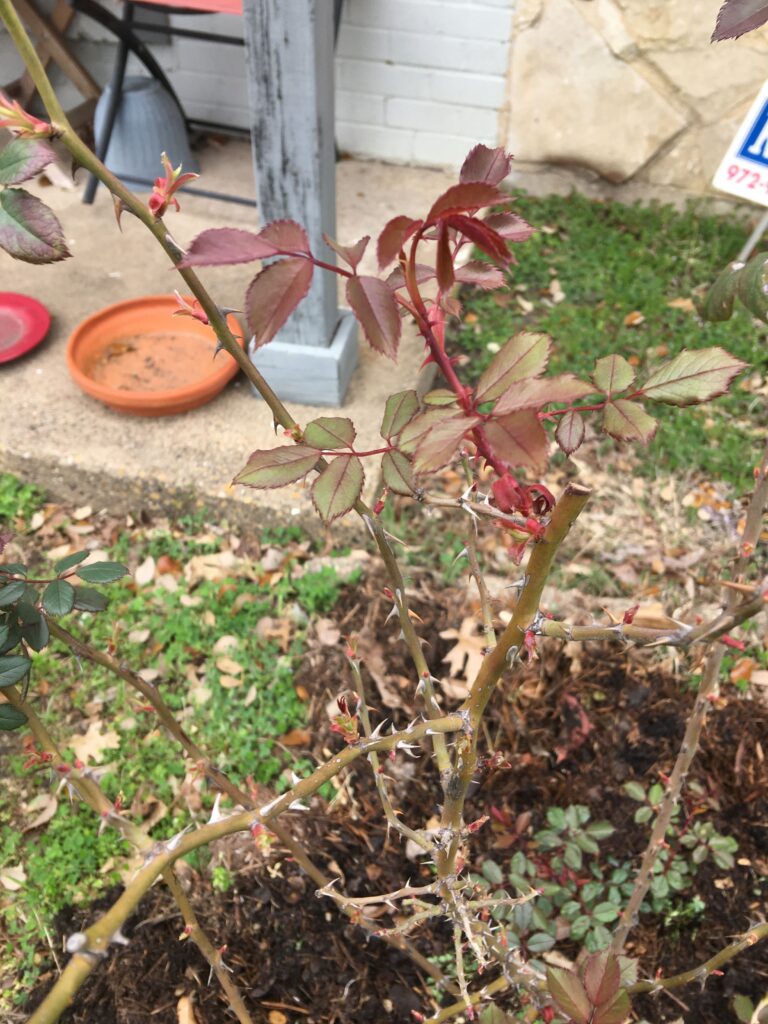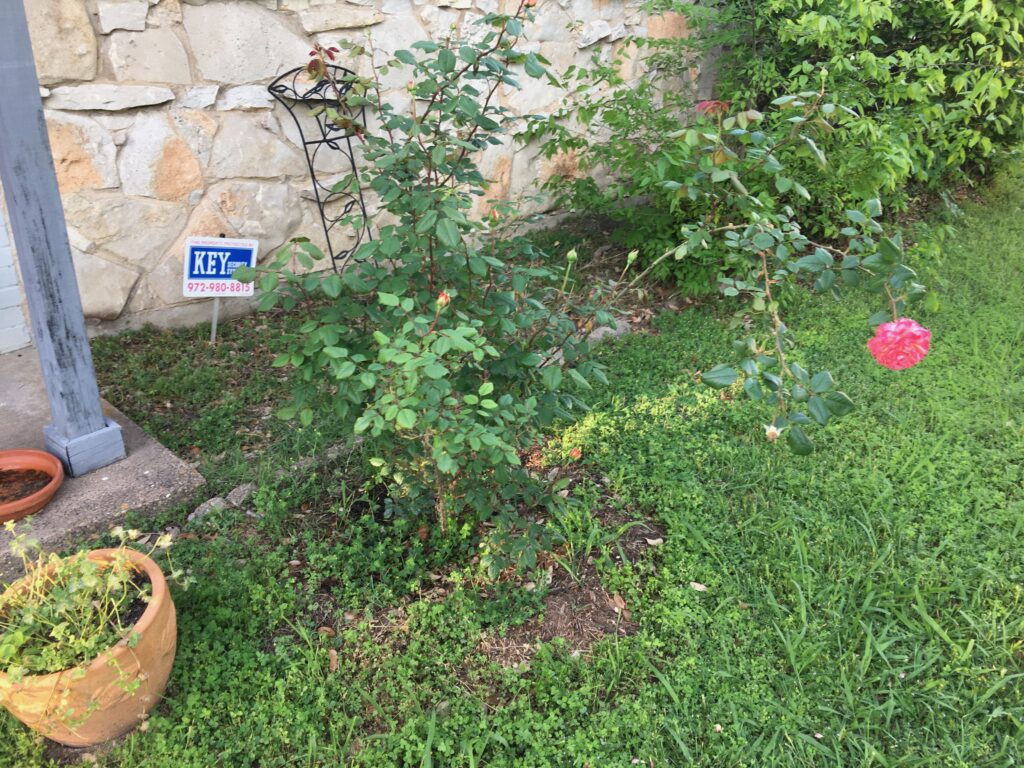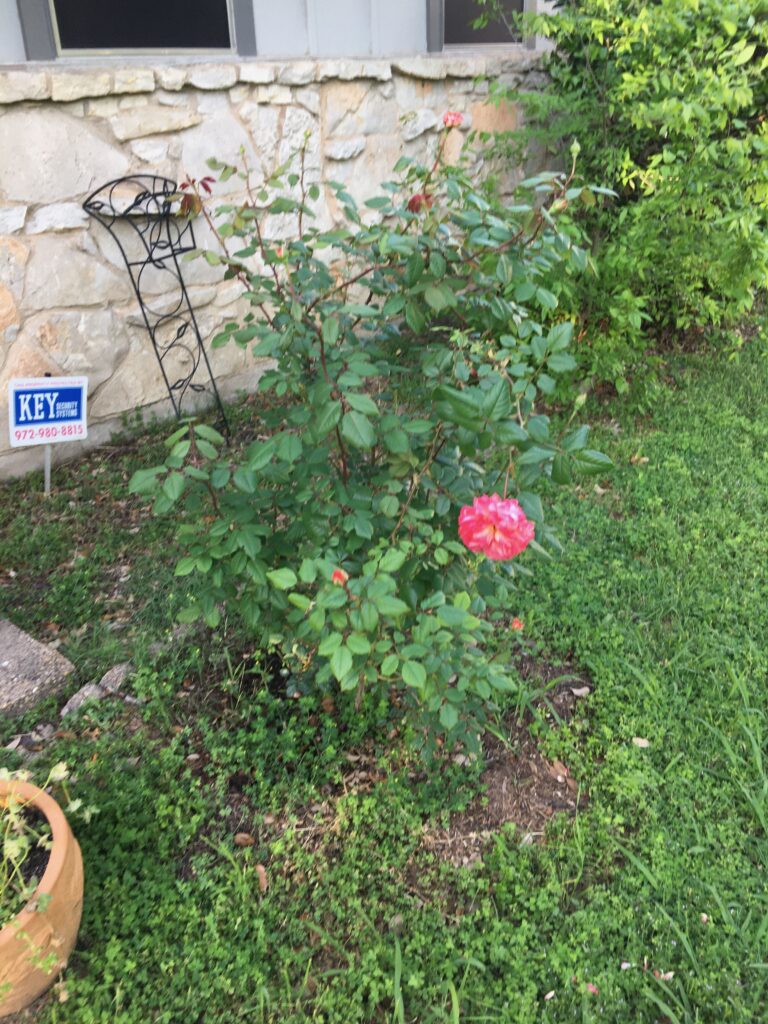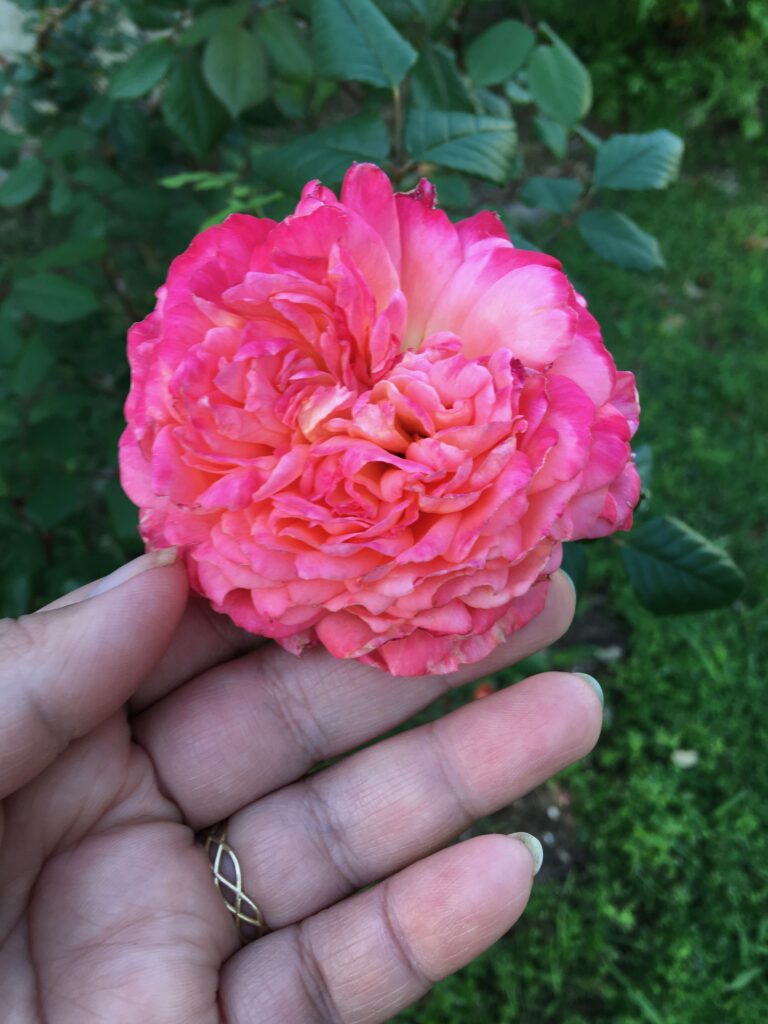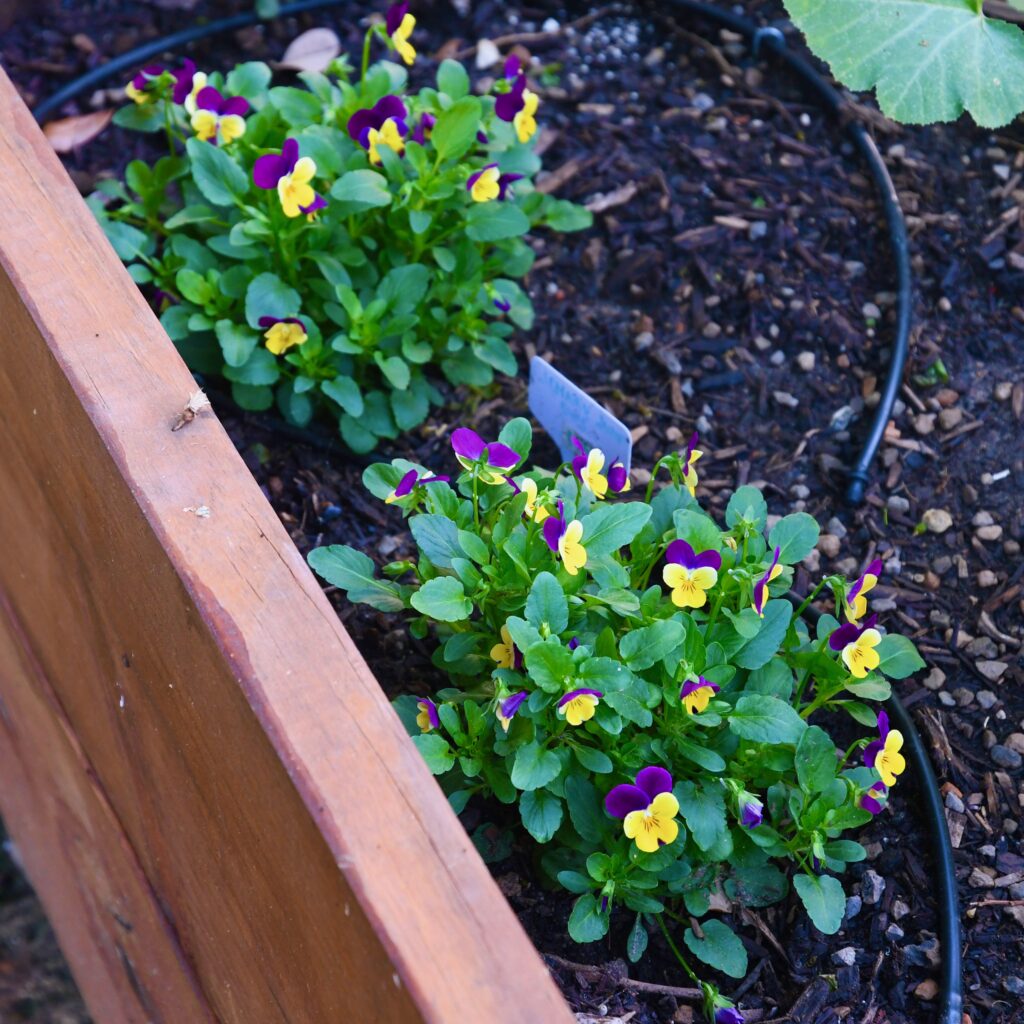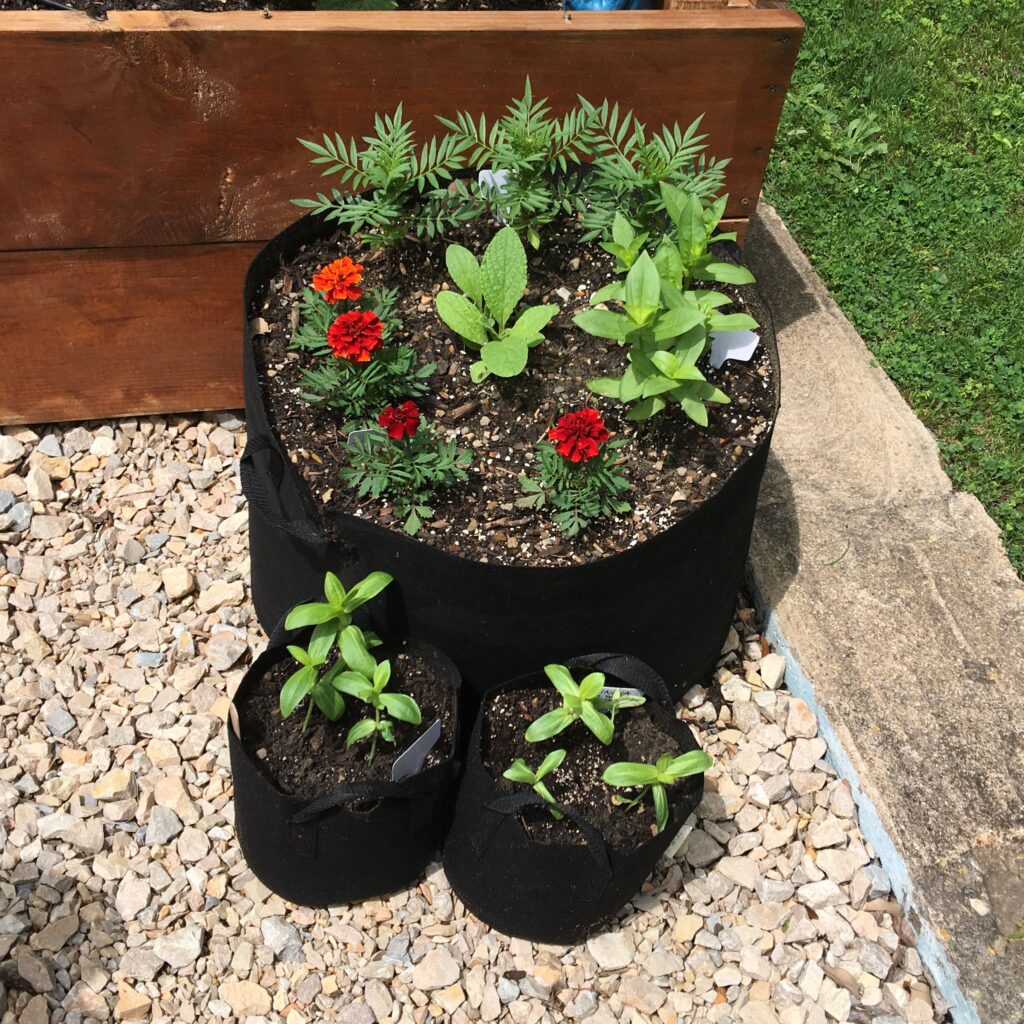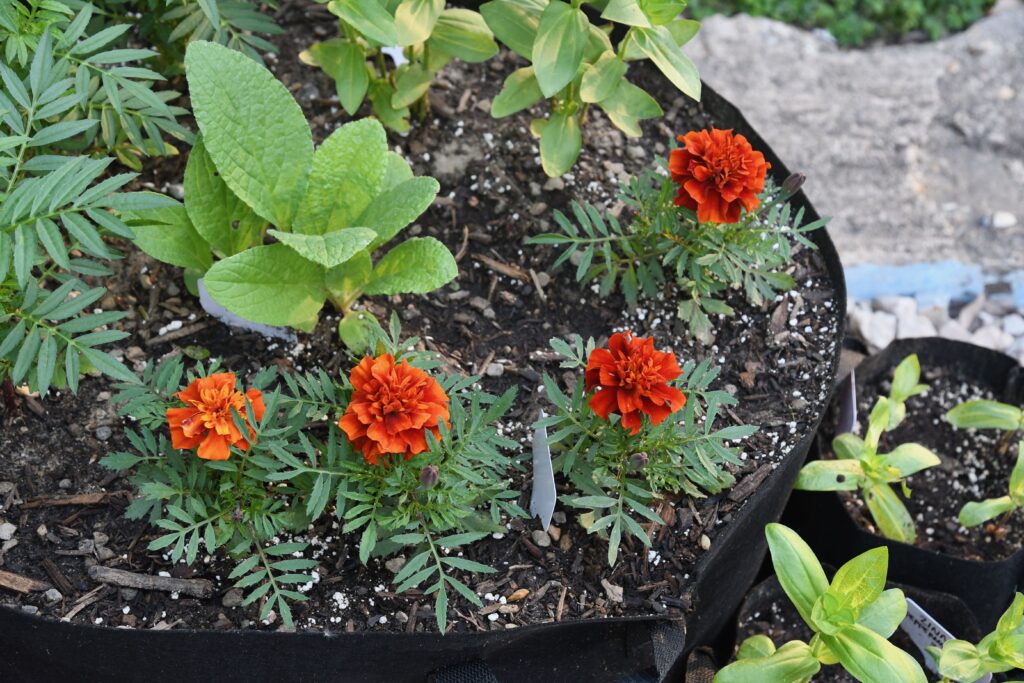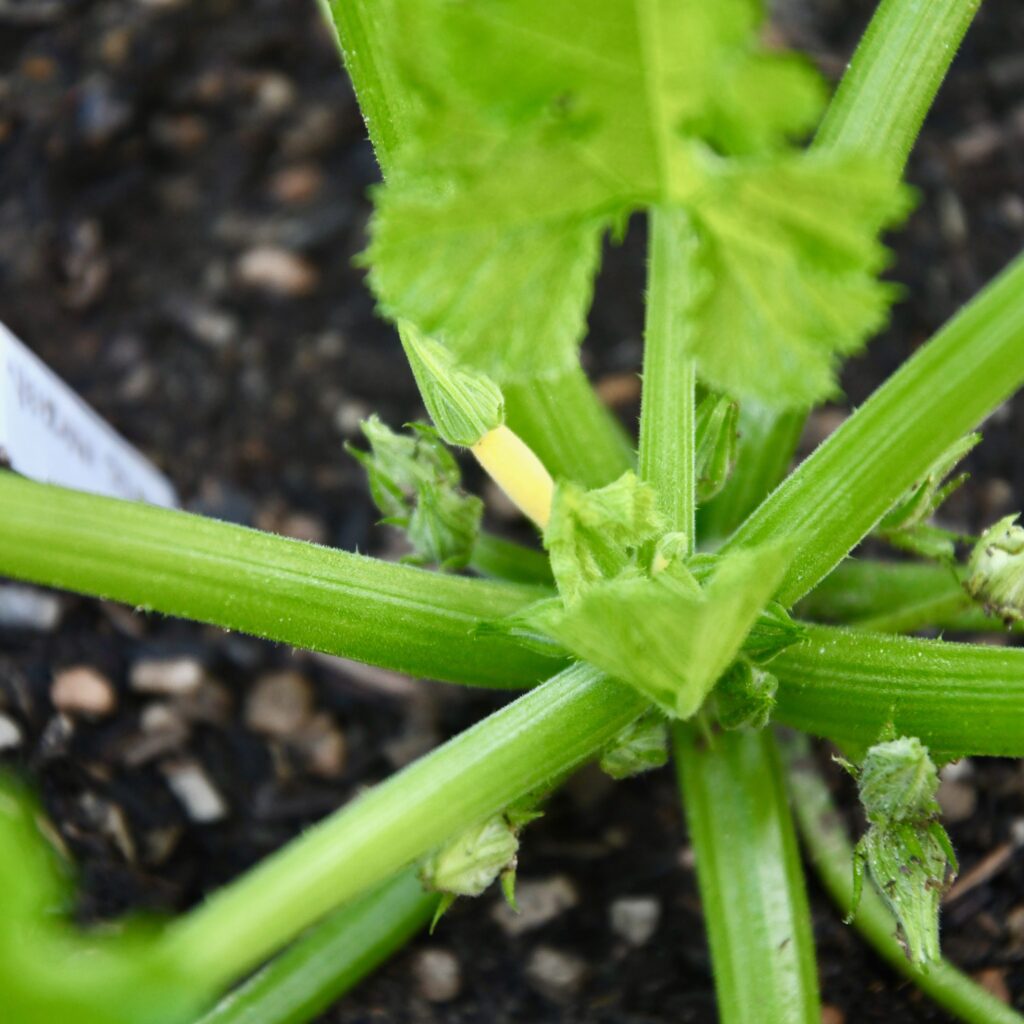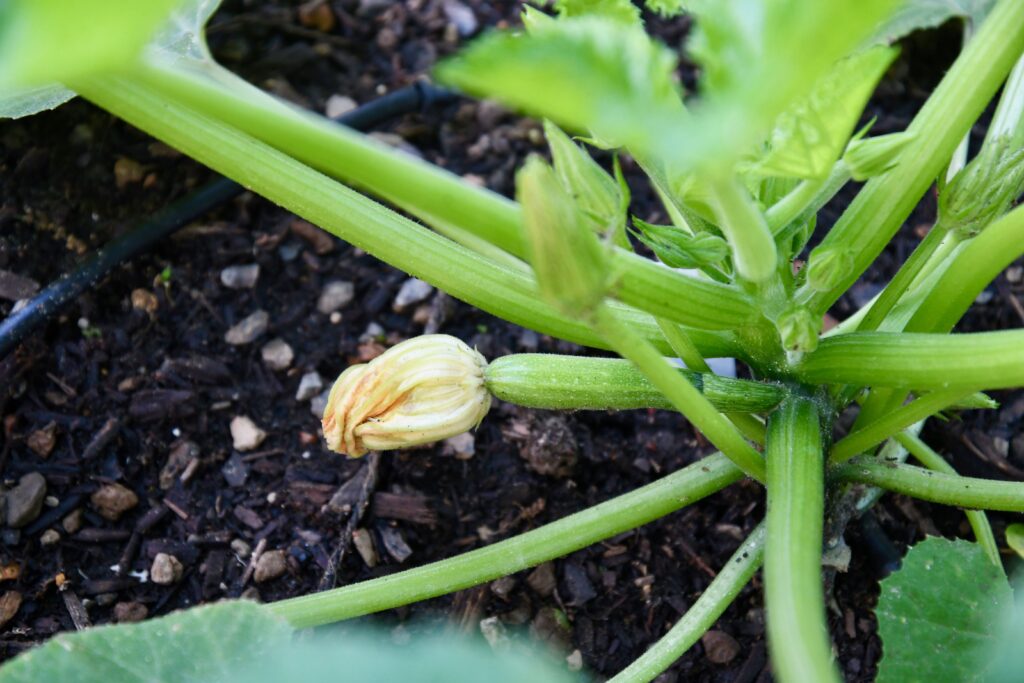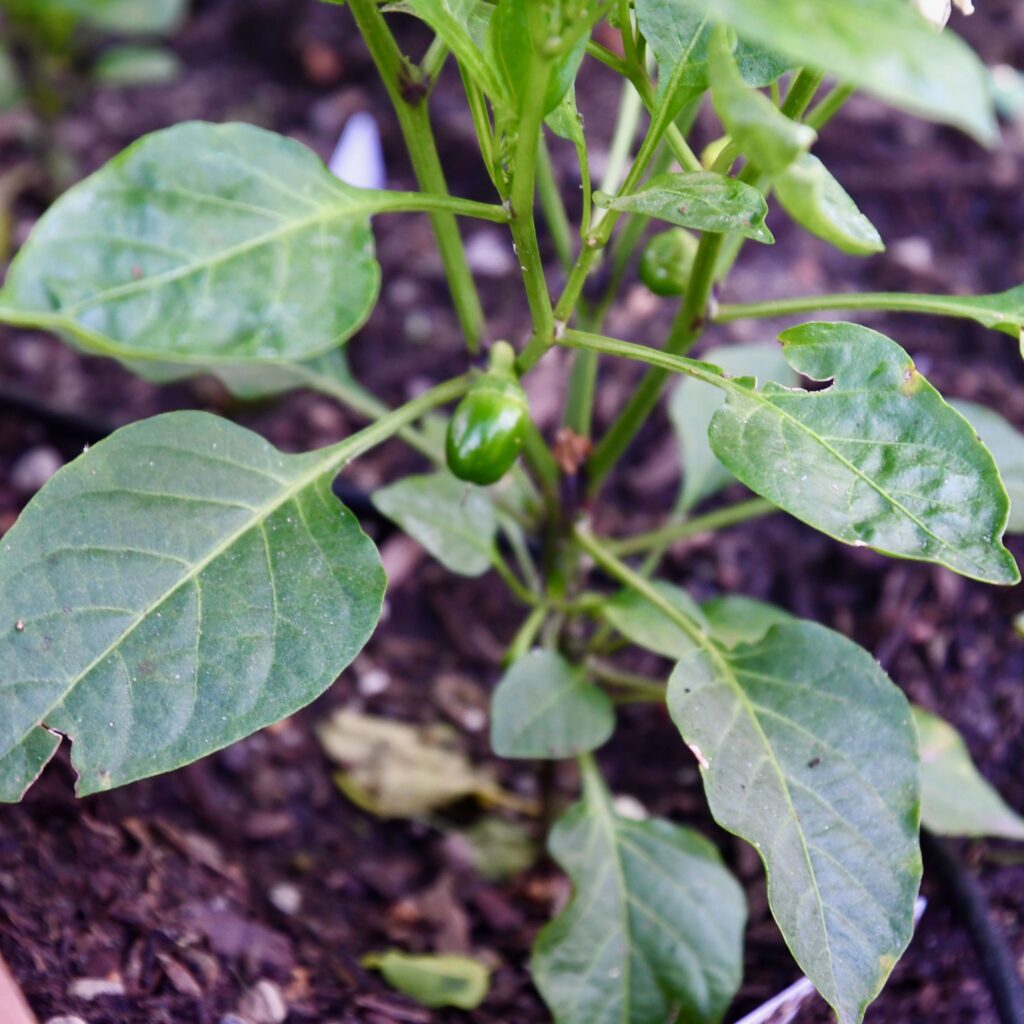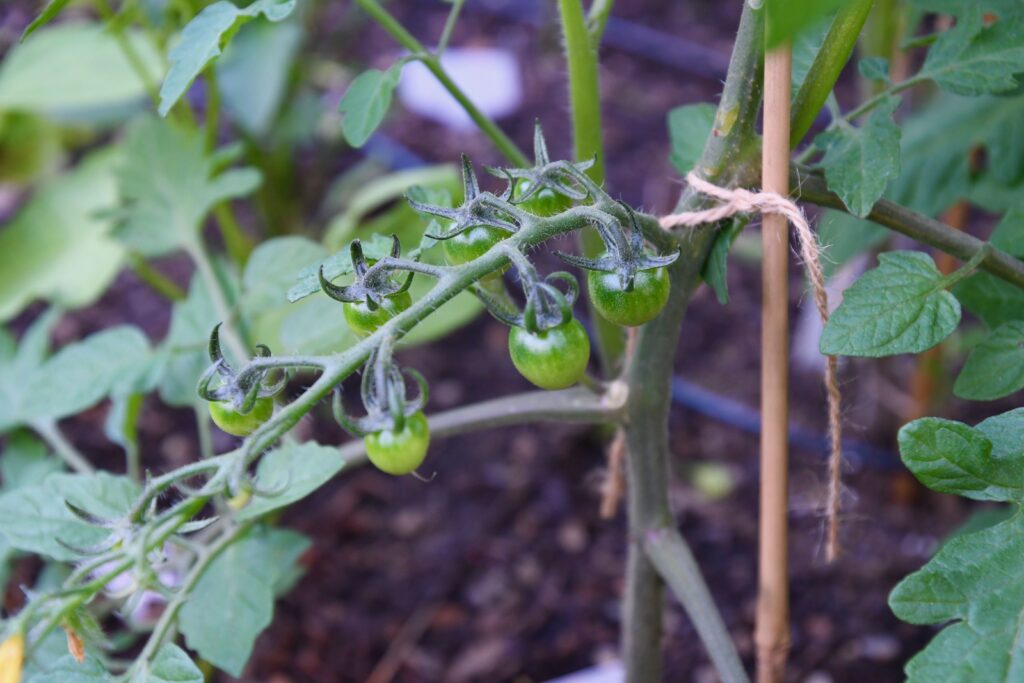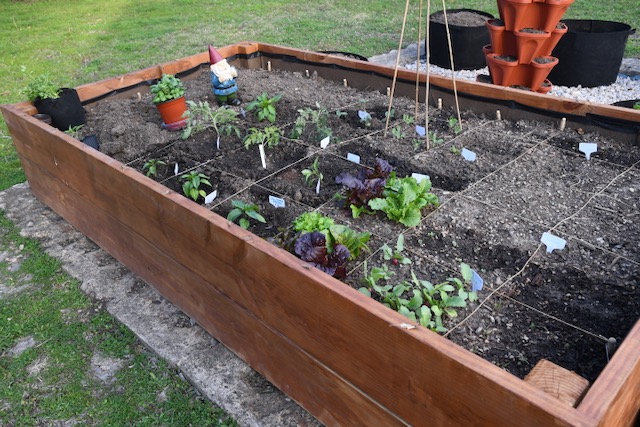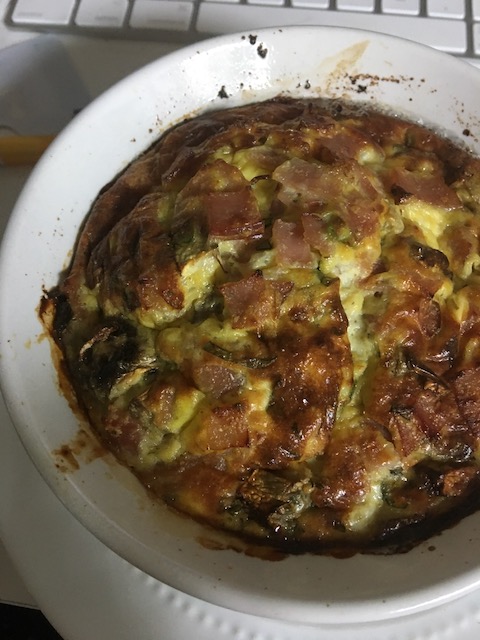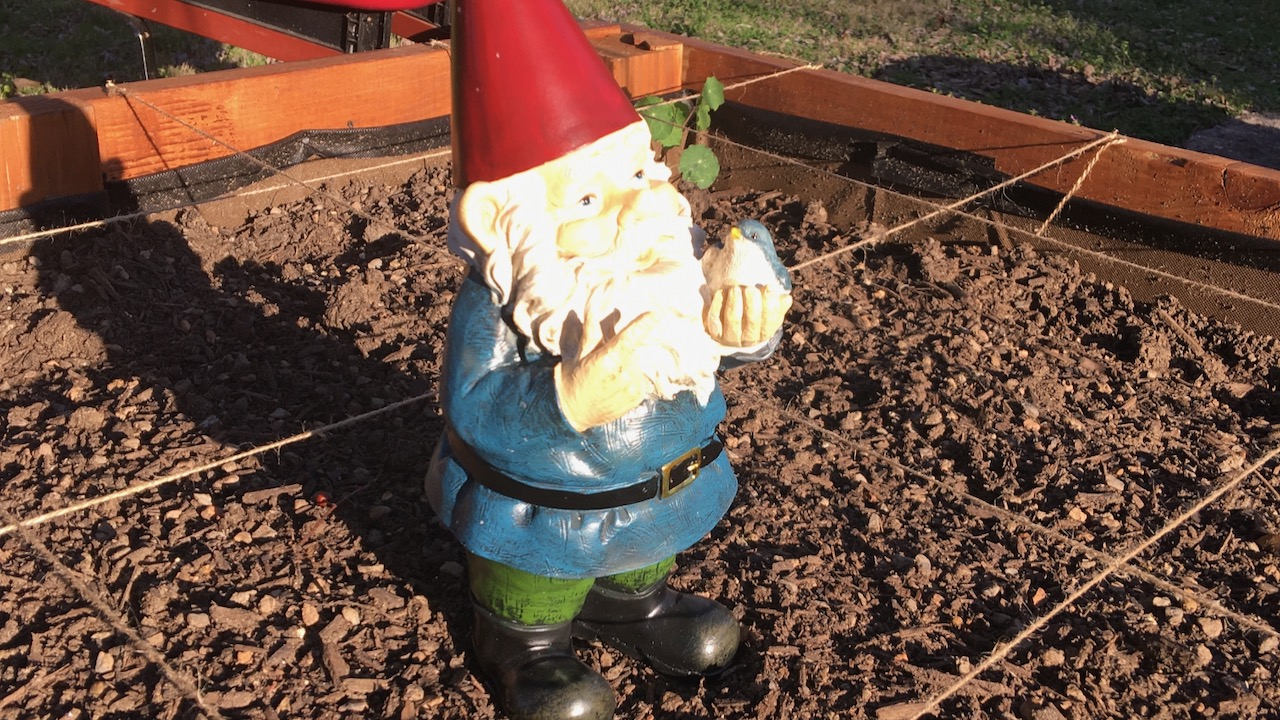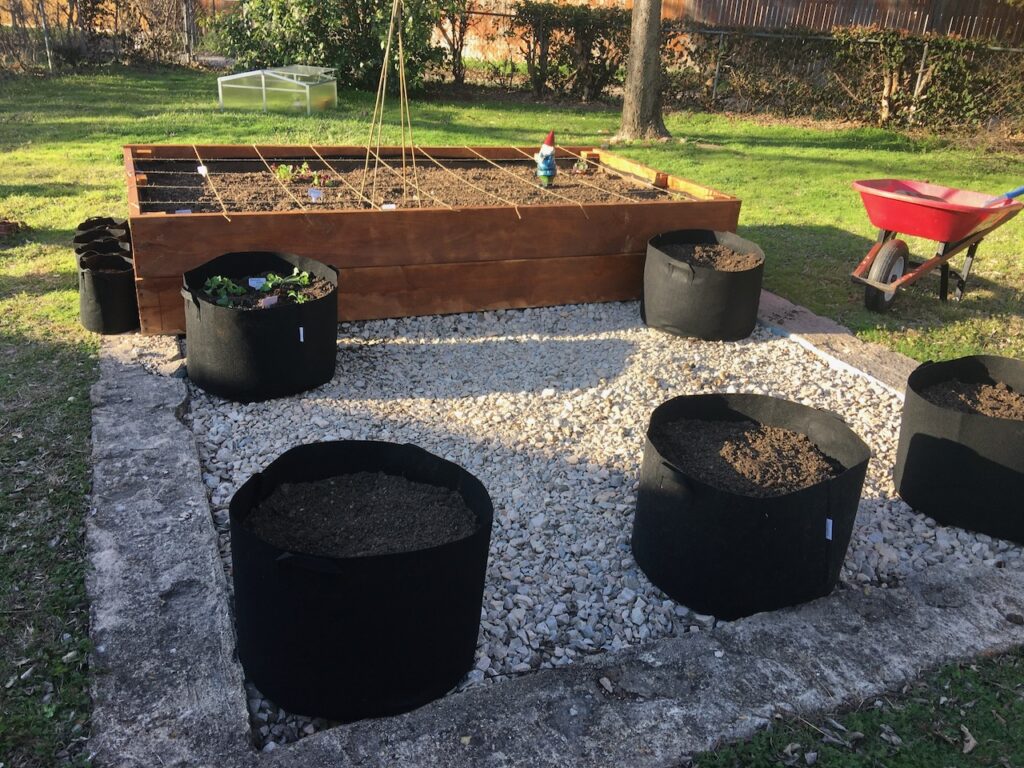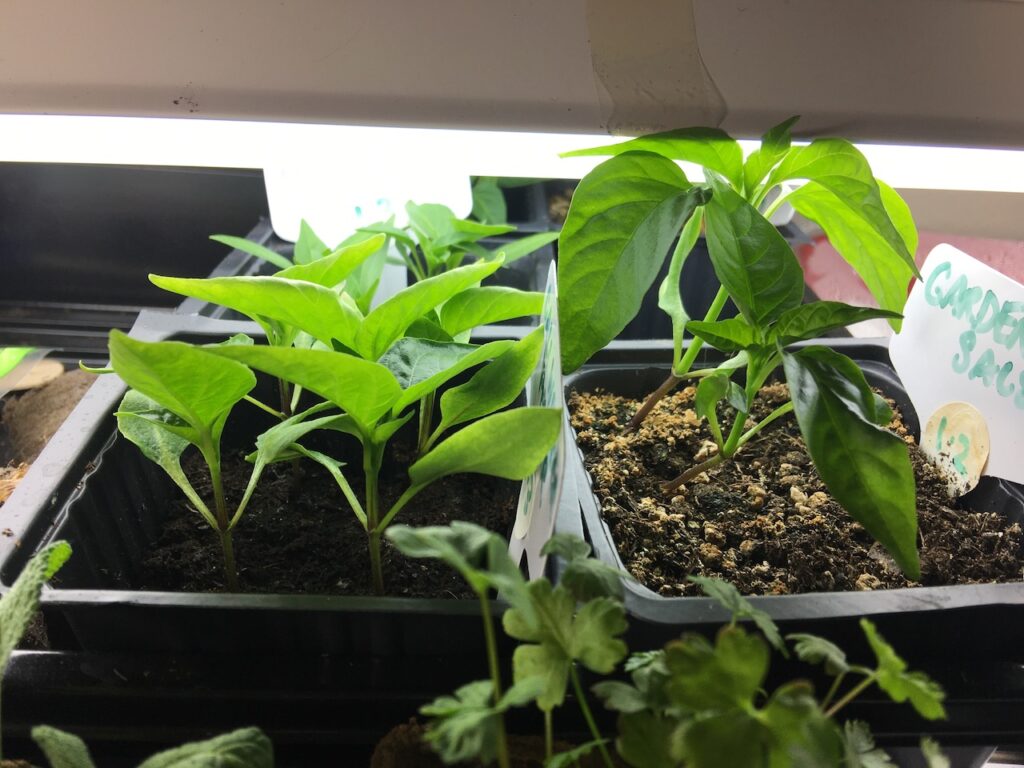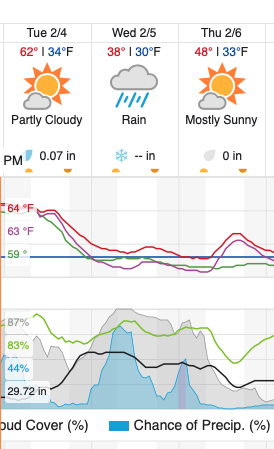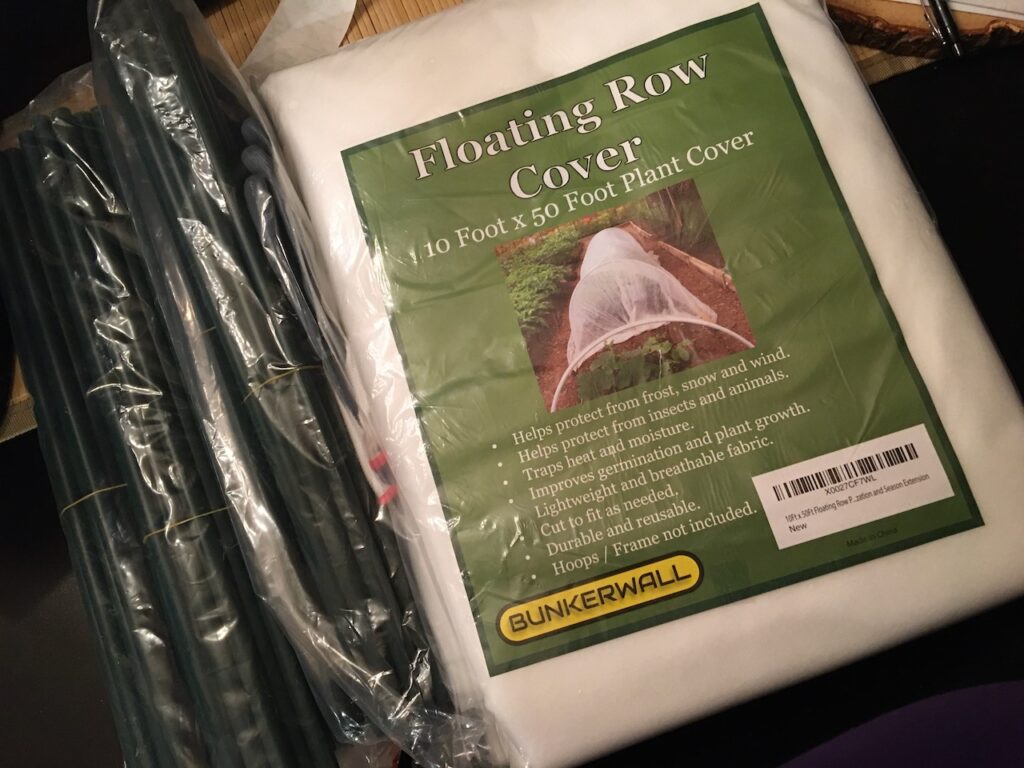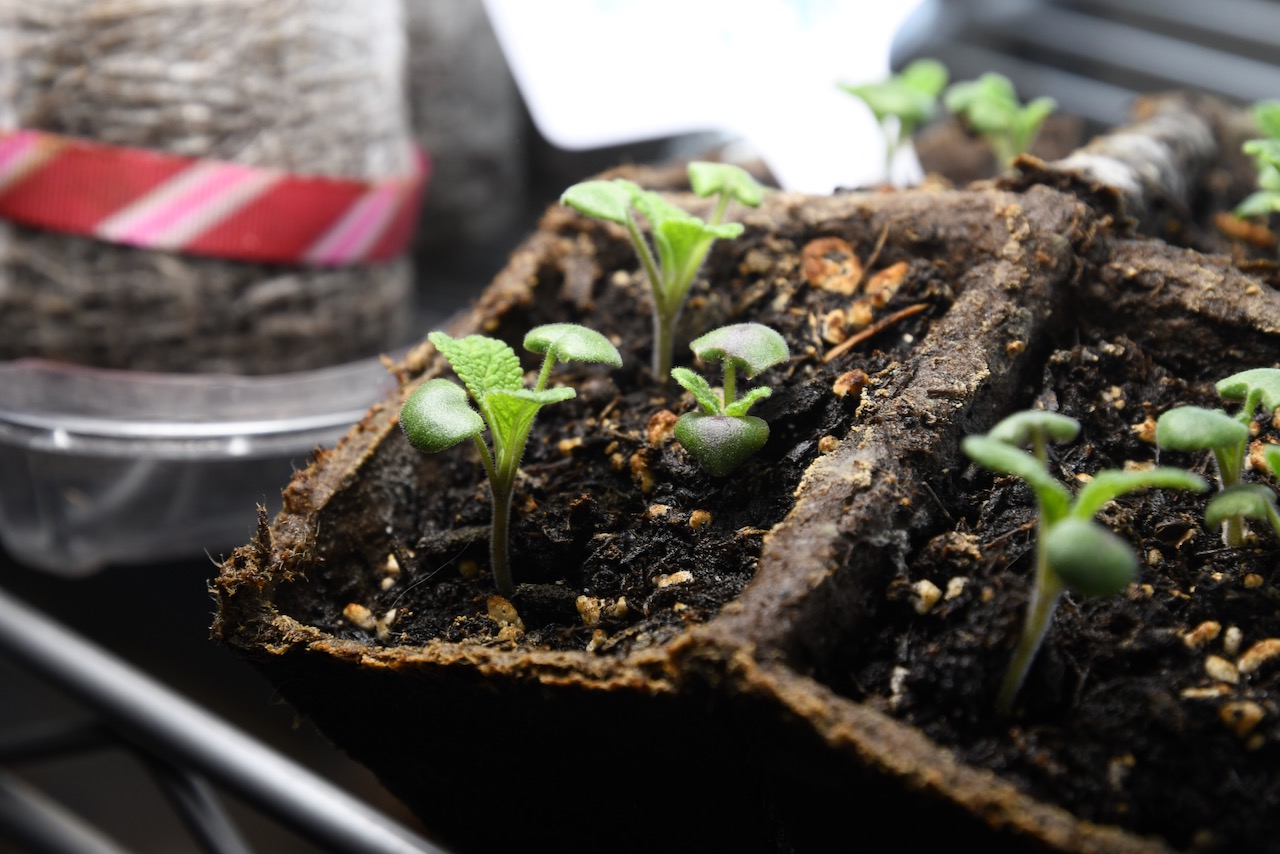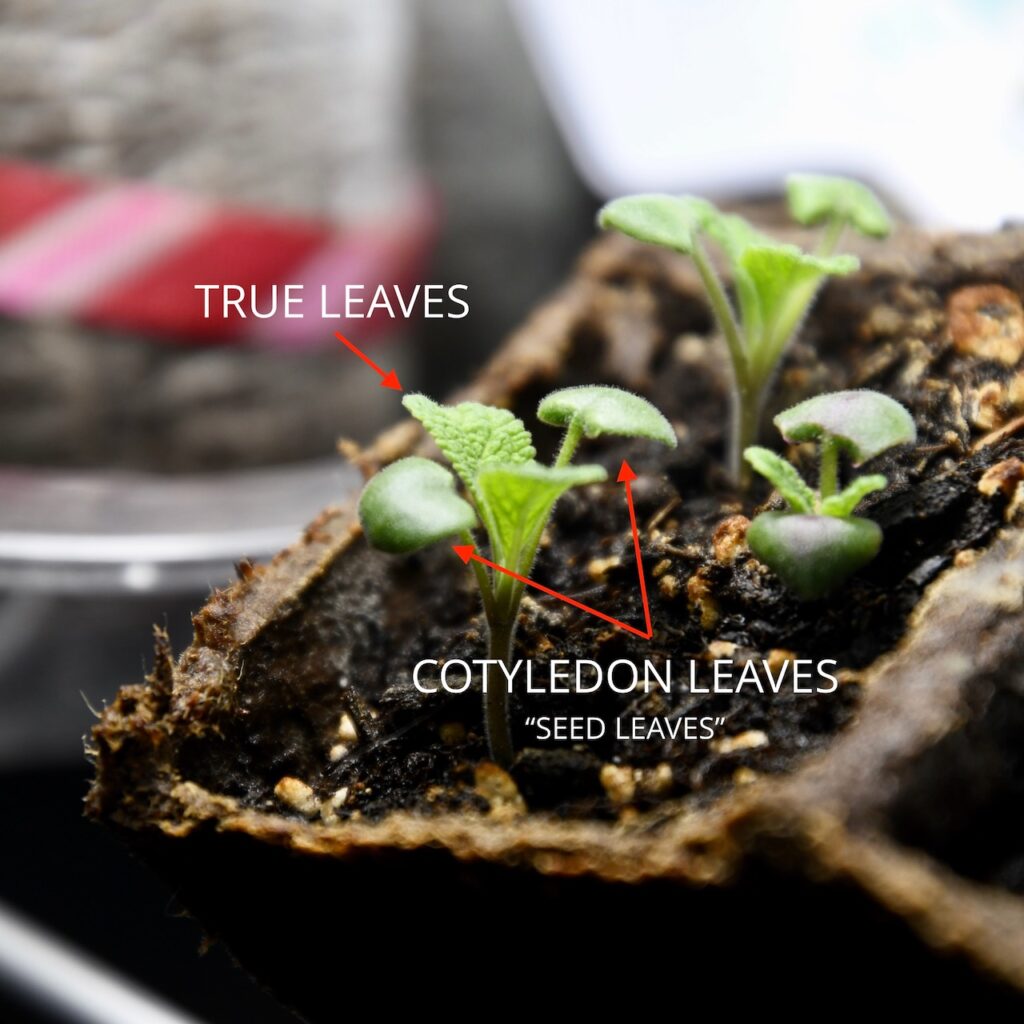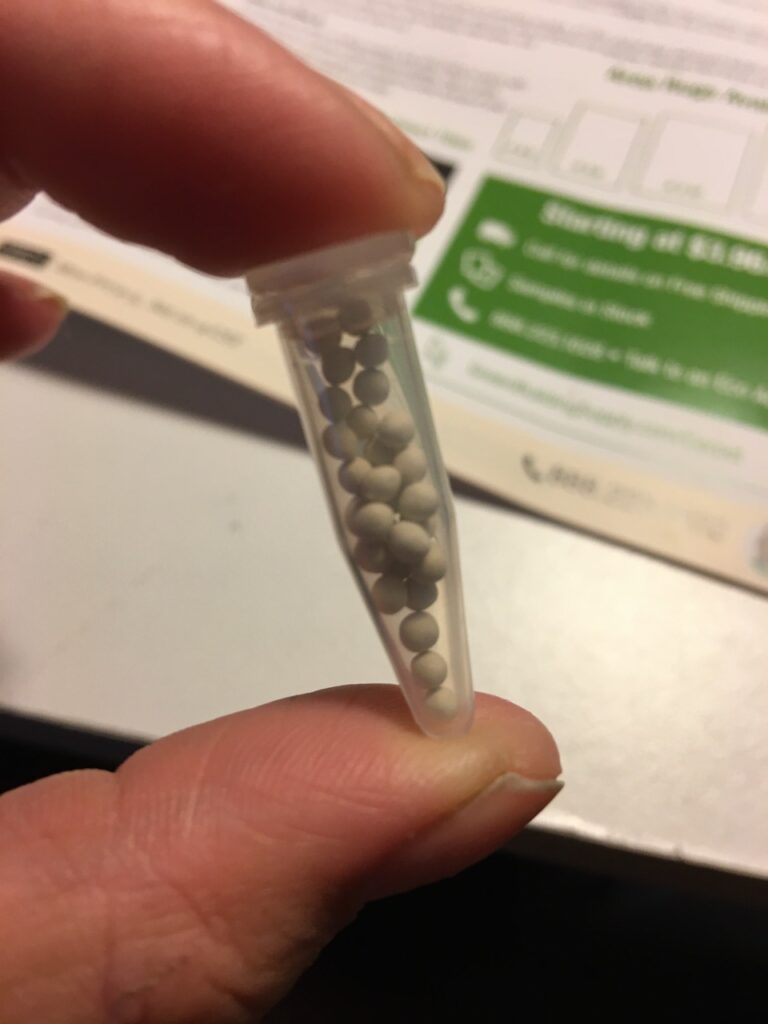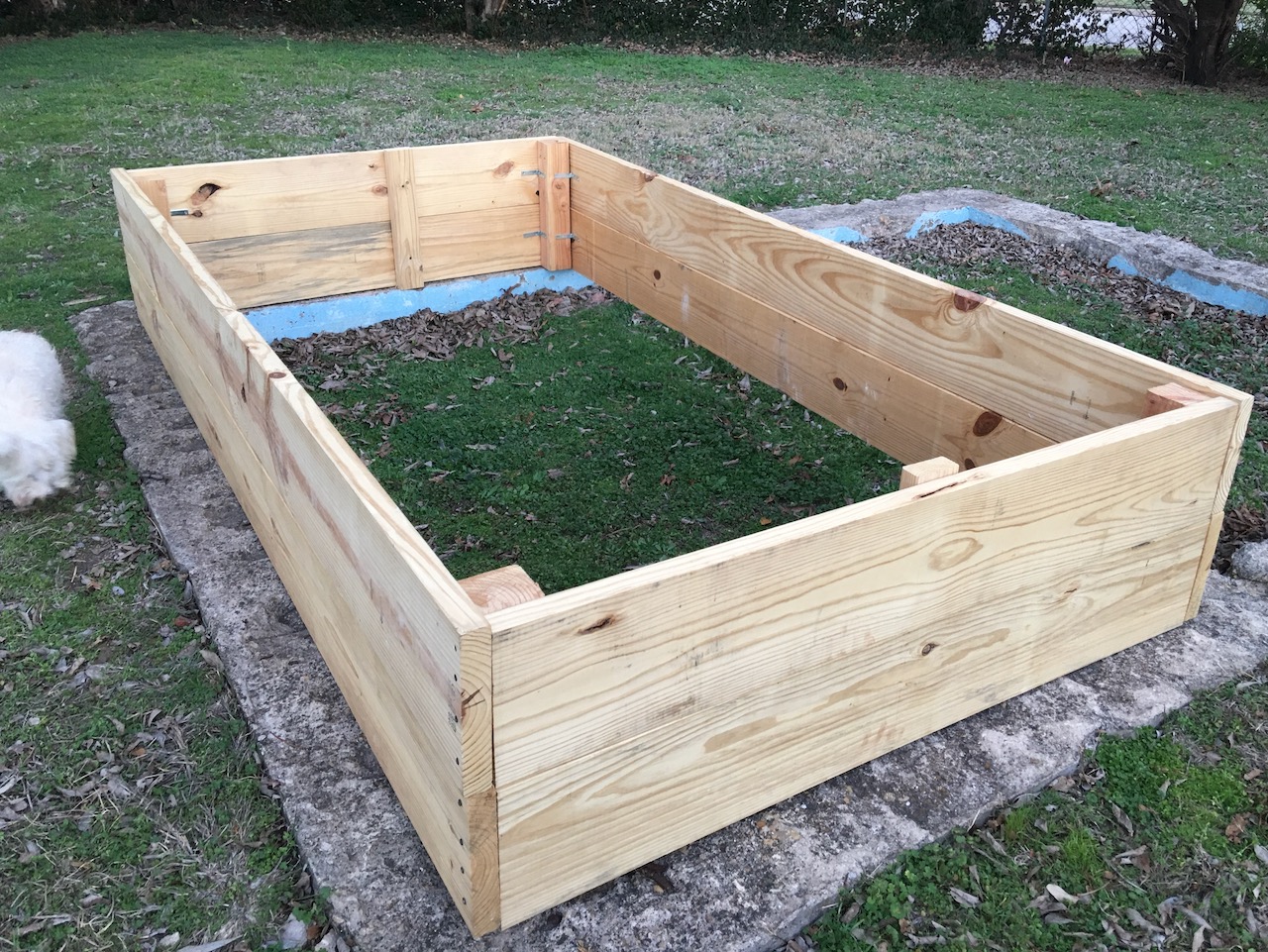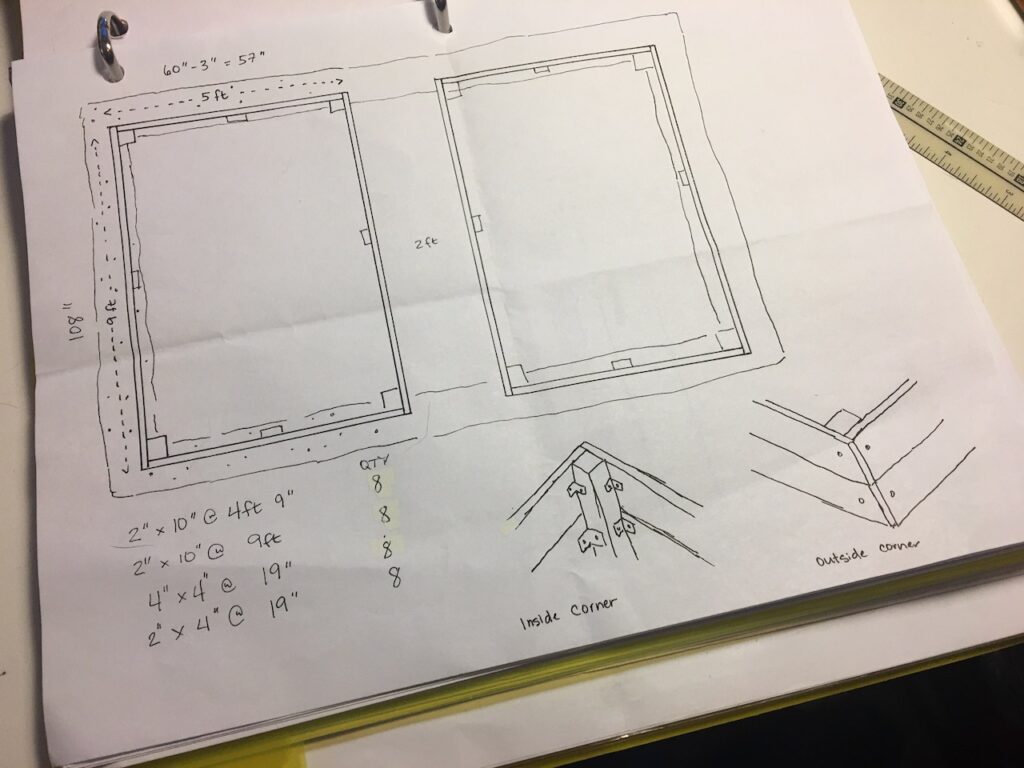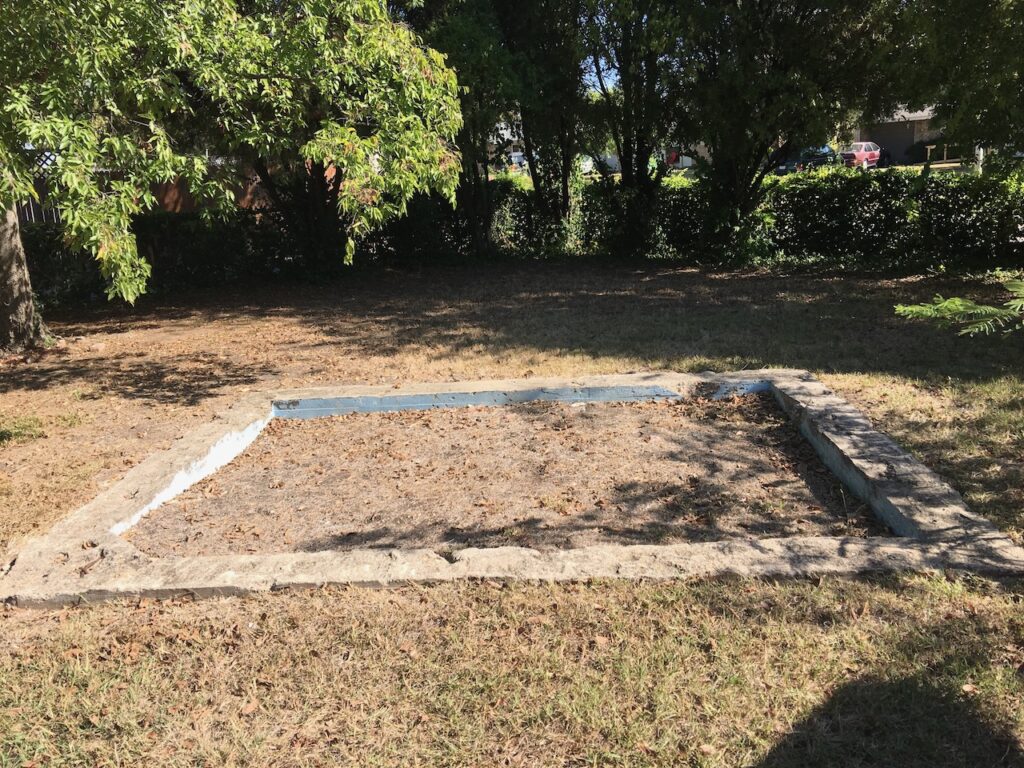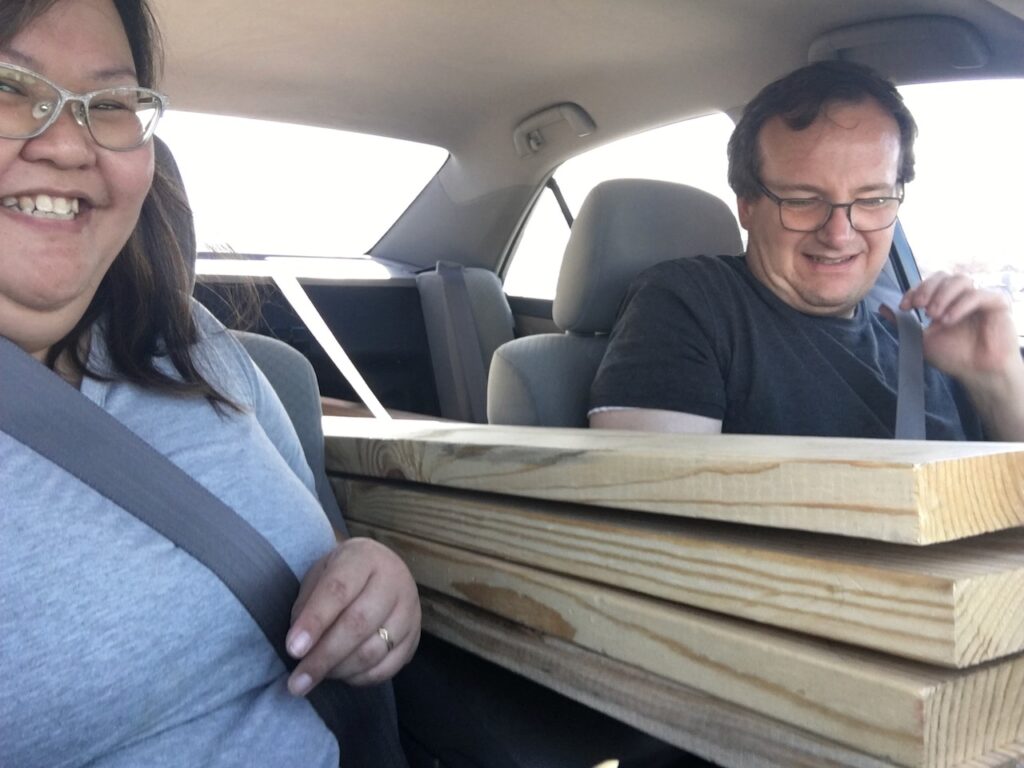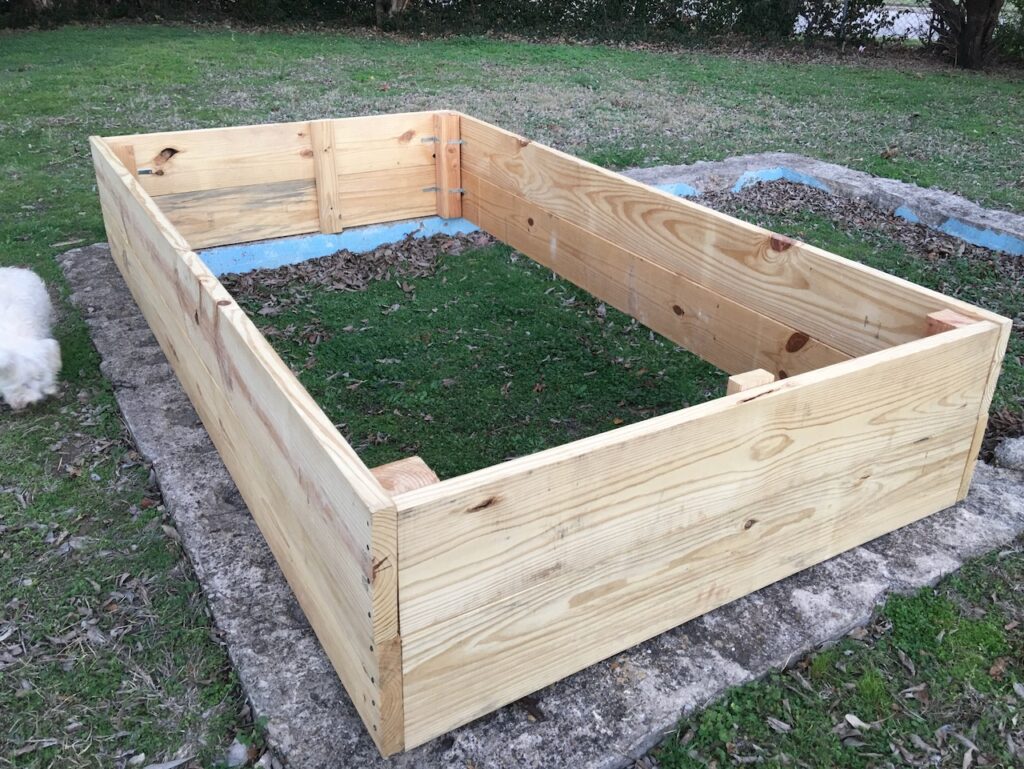We’ve been in lockdown for a month now which means I’ve been working from home for a month now too. The nice thing about being from home most of the time is I have the time to be able to devote time to all of my projects around the house, including the garden.
Let’s begin with some of the flora.
First of all, the rose that started it all, Peace, did not survive the winter. Last year, it was already showing signs of being taken over by its root stock, but I was able to fend it off for a while. Not this year. Peace passed away quietly and finally allowed its root stock to completely take over. At some point before the weather gets too hot, I’ll have to remove the remains and fill the spot with something else.
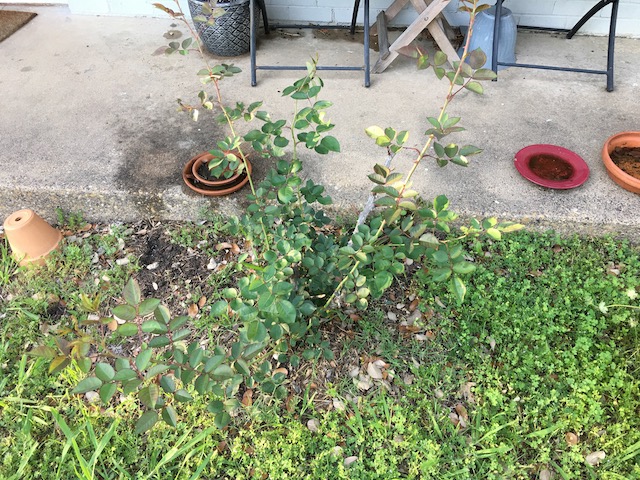
My second rose, Portlandia, gave me a scare early in the season. Initially I was concerned it was infected with the deadly RRD (Rose Rosette Disease). It was showing most of the tell-tale signs: bright red or burgundy foliage, weak stems, unusual growth. The only thing it didn’t show was the excessive thorns which is a common characteristic of infected rose bushes.
Most rosarians recommend to observe the rose over a couple weeks because sometimes the burgundy foliage can be mistaken for new, healthy growth. So I did, and over time, the red foliage turned green and at least one of the buds opened to a healthy, signature Portlandia bloom. What a relief because it would’ve broken my heart to have to dig up and toss out this rose. This was the rose I purchased to signify our wedding event.
I’ve added some annuals to areas around the vegetable garden because it helps with the pollination. Flowers such as violets have been providing a continuous cycle of blooms for 4 weeks already. The set of Fireball marigolds I started several weeks ago have already provided their first set of long-lasting blooms and are now working on their second. The zinnias have just started forming their first buds.
This morning, I was doing some upkeep around some of the tomatoes when a little bee came buzzing out of the squash plants right next to me. I stepped back, startled, and gave him his space. He buzzed around a bit before landing on some of the tomato blossoms and then moved over to the marigolds and then back over to the squash. Witnessing this brought me a lot of pleasure because I was wondering whether or not it would be worth planting any pollinator flowers the first year. As if my garden needed more time to gain traction on the Pollinator’s Yelp website before any of them would start visiting.
But no, mother nature didn’t need a social network to ensure the cycle of life continued. Somehow everyone just knows what to do, when to do it, and where without any interference whatsoever. It just shows how much smarter nature is than we think.
The vegetable garden is doing great as well. If north Texas would at least stick to having consistently cool, spring weather rather than these random cold snaps, I think the garden could be more productive. It hasn’t really stopped us from being able to enjoy a constant supply of lettuce, kale, and more recently sugar snap peas.
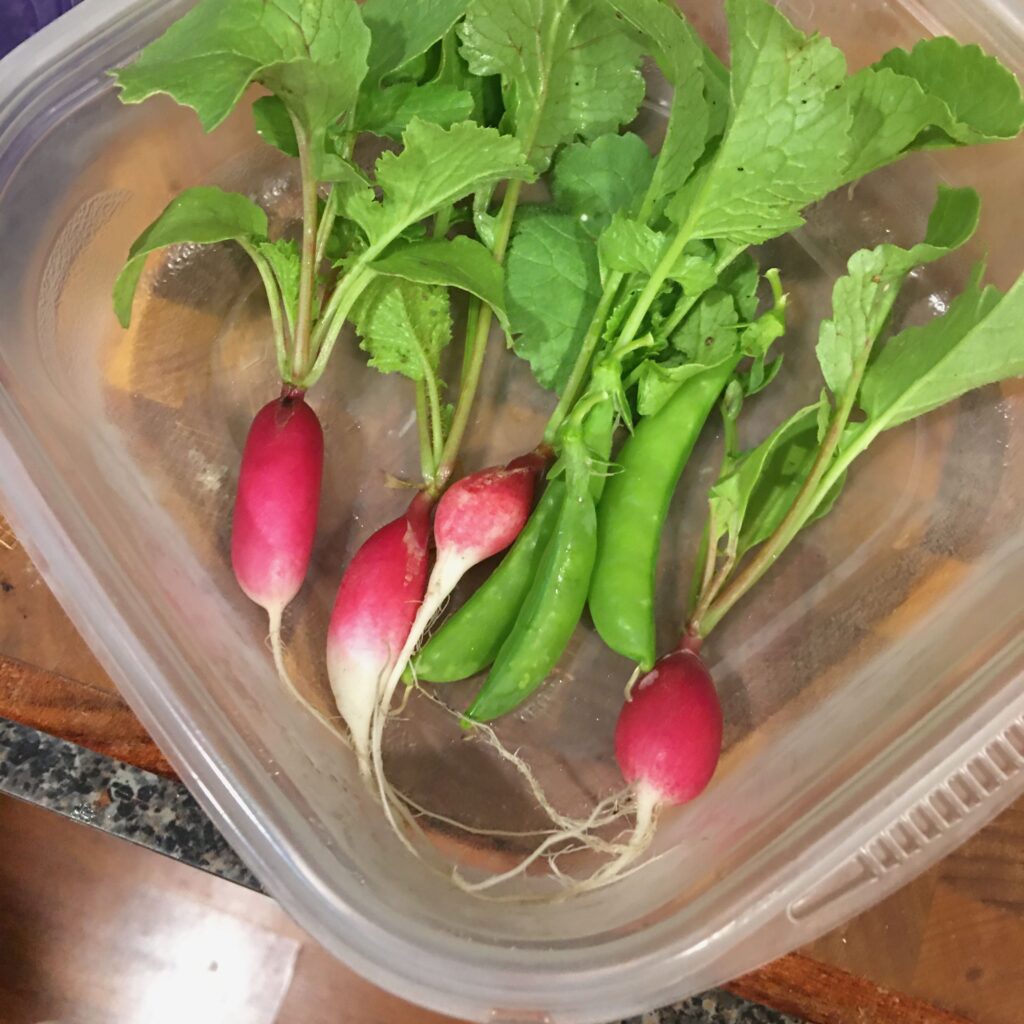
I am eager to get to try some of those tomatoes and peppers, but I know those are weeks away from being ready. In the meantime, you can just admire the photos of these little bursts of green that are forming.
Garden Pests and Failures
There are a few things that I’ve had issues with though. We have an uninvited guest consuming some of our kale and although it hasn’t stopped us from harvesting the untouched kale, it does reduce our available harvest. After researching, I found that there are some natural repellants that I could’ve used in the beginning, such as rosemary oil or peppermint oil diluted in water. Those mask the scent of the greens that attract the pests. However, I don’t know if that will ward off an infestation that’s already underway. I can probably try and see what happens. Maybe it’ll at least slow it down.
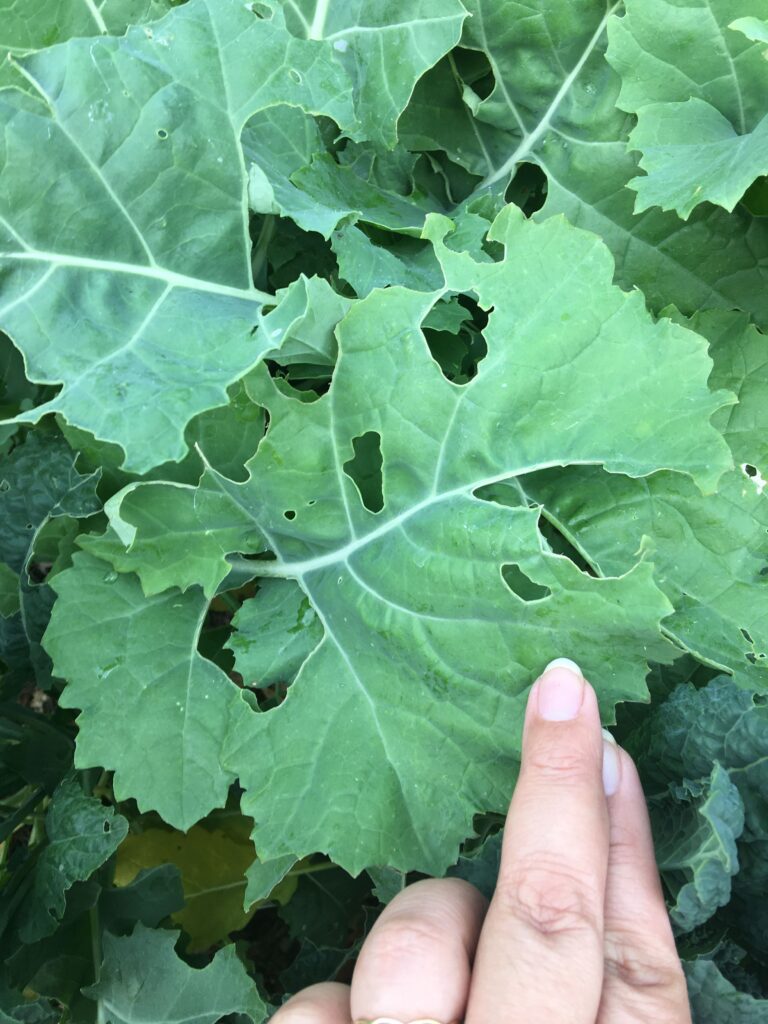
The other problem I’ve encountered is with spinach and green onion. I just haven’t seen any growth from the two at all. out in the garden. I direct-seeded the two back in early spring and only plug of spinach showed successful growth. The green onions never even left the seedling stage. Again you’ll see the spinach is being eaten by something, but only because I just kinda neglected it after awhile. The other seedlings never even got much bigger than what you see pictured.
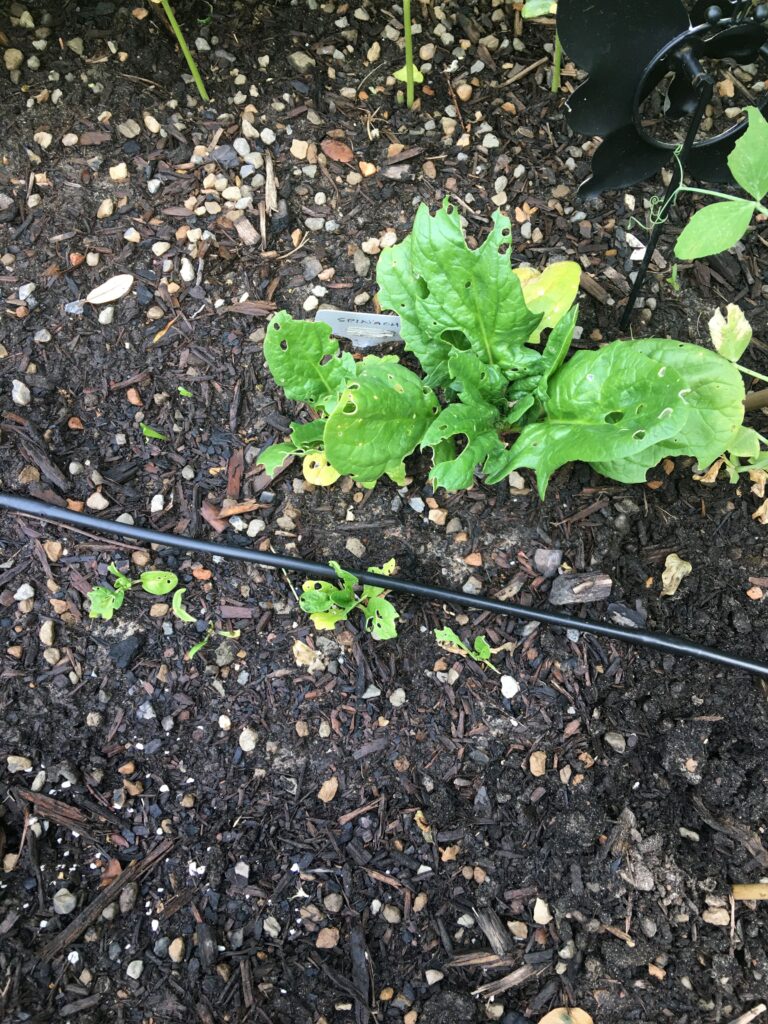
I’m debating whether or not I want to start some spinach indoors and transplant them, although I’ve read they don’t transplant well, take 7 weeks to mature and don’t grow well in hot weather. Perhaps it’s too late? Maybe I’ll just replace it with another plot of sugar snap peas instead. Those have been successful and we know we like those a lot.
Still, having this garden is a sanity saver during this unusual time in our history. By sheer luck we started this project last December, but it’s become the most important thing in our daily lives–in my daily life mostly. Not only do we receive a meager nutritional return, but it does provide a sense of pride and accomplishment as well as some distraction when there are limited distractions available right now.
It’s also created a deeper connection between me and my mom, who, on every phone call, always asks how my garden is doing. Not only that, it’s awakened stories of her past about her parents, my dad, his parents and how they all were avid gardeners at some point in their lives. I find myself learning something new each time I talk to her.
I wonder if this pandemic never happened, and if I had still spent 50 hours a week away from the house, would I still have had the time and energy to dedicate to the garden’s success? Or would my enthusiasm for the project have faded off halfway through and shelved before anything came to fruition, much like other projects in the past? I don’t know. I would hope not.
